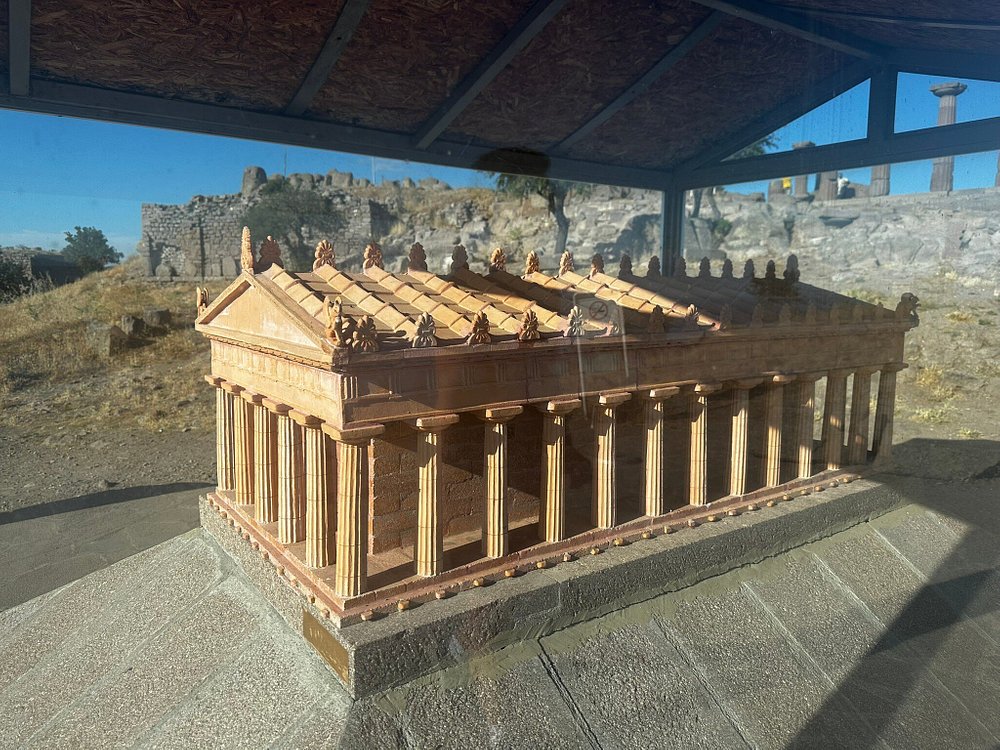The Temple of Athena in Assos is located in the village of Behramkale, in the Ayvacık district of Çanakkale province, at the highest point of the ancient city of Assos. Built in the 6th century BC in honor of Athena, the city’s protective goddess, this structure holds the distinction of being the only temple in Anatolia constructed in the Doric order. Made of andesite stone, the temple was built in a location overlooking the sea, chosen for both its religious significance and strategic defensive advantage. Surrounded by 38 columns, many of which were damaged over time, some columns still remain standing today.
The Temple of Athena is also intertwined with the philosophical and intellectual past of Assos. The famous philosopher Aristotle founded a school of philosophy here, indicating that this region was not only a religious center but also a significant place of thought. Some of the reliefs and architectural fragments excavated from the temple are now exhibited in major institutions such as the Istanbul Archaeological Museums, the Louvre, and the Museum of Fine Arts in Boston. Today, the temple stands out with both its historical and touristic value and captivates visitors especially with its sunset view.
Where is the Temple of Athena located?
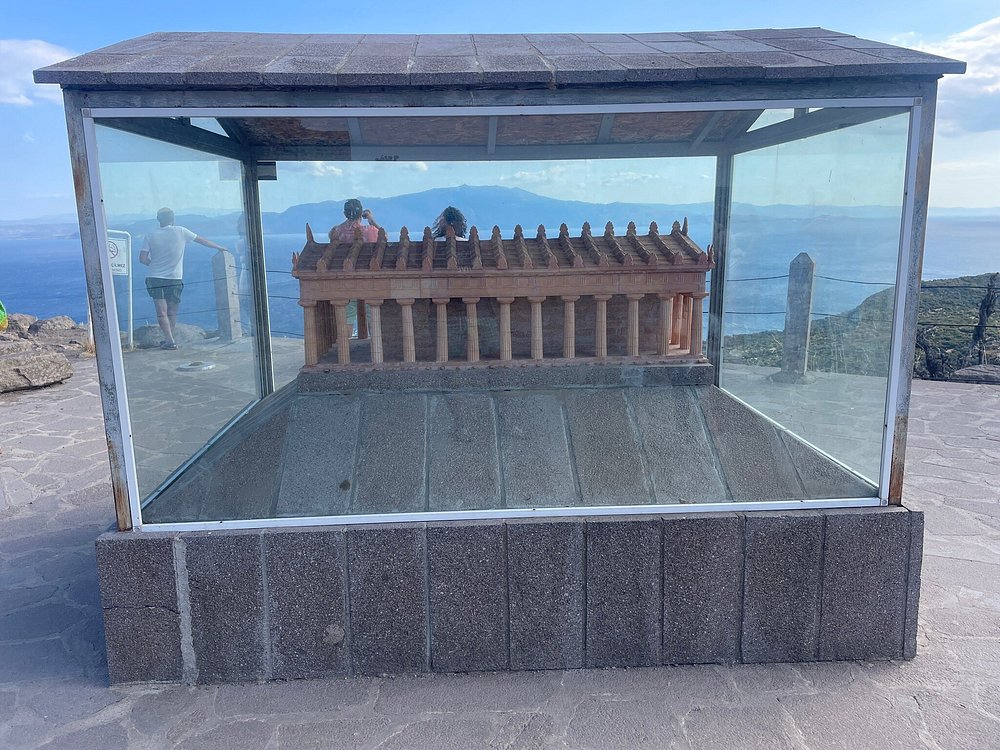
The Temple of Athena is located on the acropolis hill of the ancient city of Assos, in the village of Behramkale in the Ayvacık district of Çanakkale province, Turkey. The temple is situated on a high point overlooking the Aegean Sea and stands out with both its sea view and historical character.
When was the temple built and by whom?
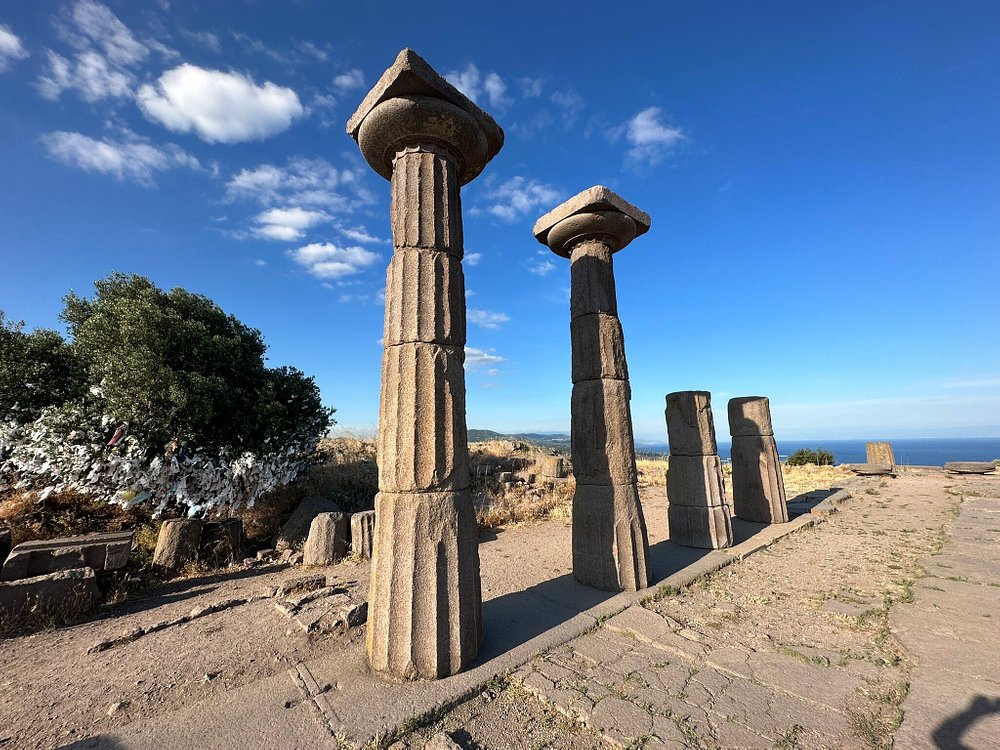
The Temple of Athena was built around 530 BC. It was constructed during the reign of the philosopher-king Hermeias, who ruled the city of Assos at that time. The Doric order was used in its construction, reflecting an architectural style rarely seen in Anatolia.
What are the architectural features of the Temple of Athena?
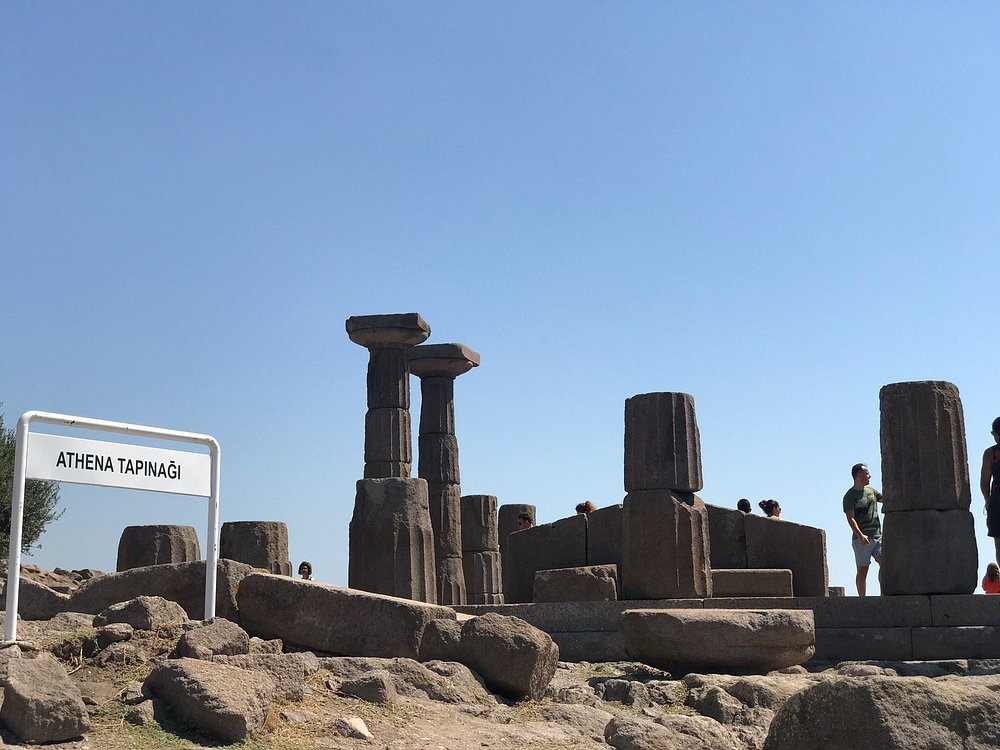
The Temple of Athena was built in the Doric order and holds the distinction of being the only Doric temple in Anatolia. Made of andesite stone, the temple was surrounded by approximately 38 columns. The column capitals and architectural details show traces of both Doric and Ionic styles, making the temple architecturally unique. The temple plan follows the typical peripteral layout and consists of the naos (main sacred chamber), pronaos (front chamber), and opisthodomos (rear chamber). Additionally, the temple is situated in a strategic location overlooking the sea, presenting an impressive appearance in terms of both the view and symbolic power.
Where is the statue of Athena that was inside the temple?
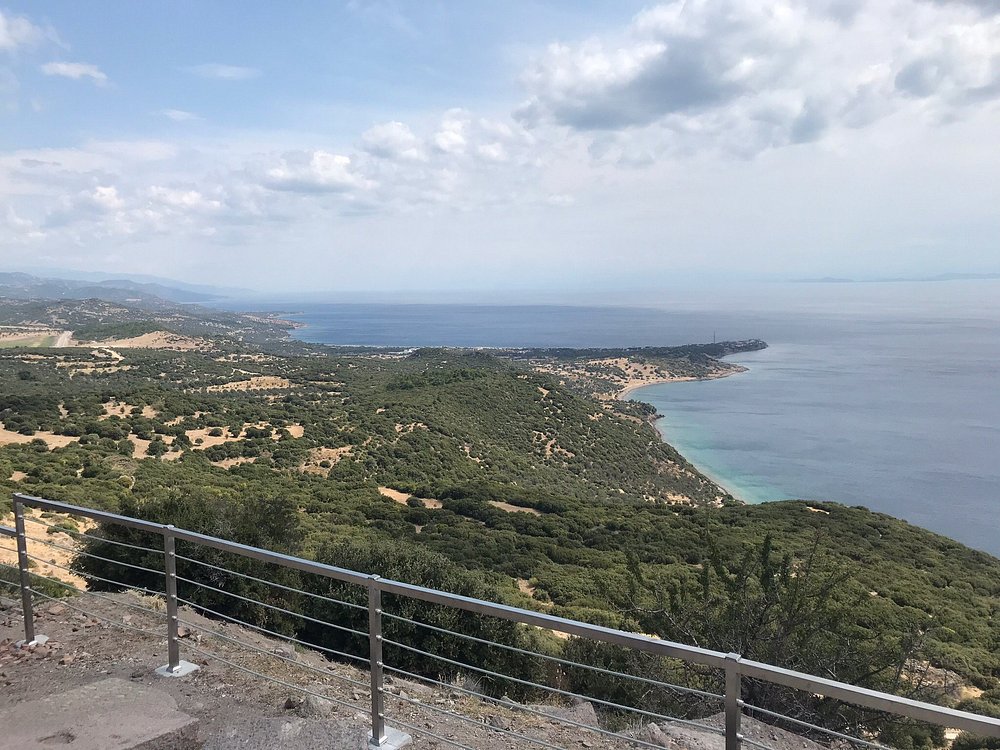
The statue of Athena, believed to have been located in the inner part of the Temple of Athena, specifically in the naos section, has not survived to the present day. During excavations conducted in the 19th century, no trace of this statue was found, and its whereabouts remain unknown. It is thought that the statue was either destroyed or moved elsewhere during antiquity.
Where are the artifacts excavated from the Temple of Athena exhibited?
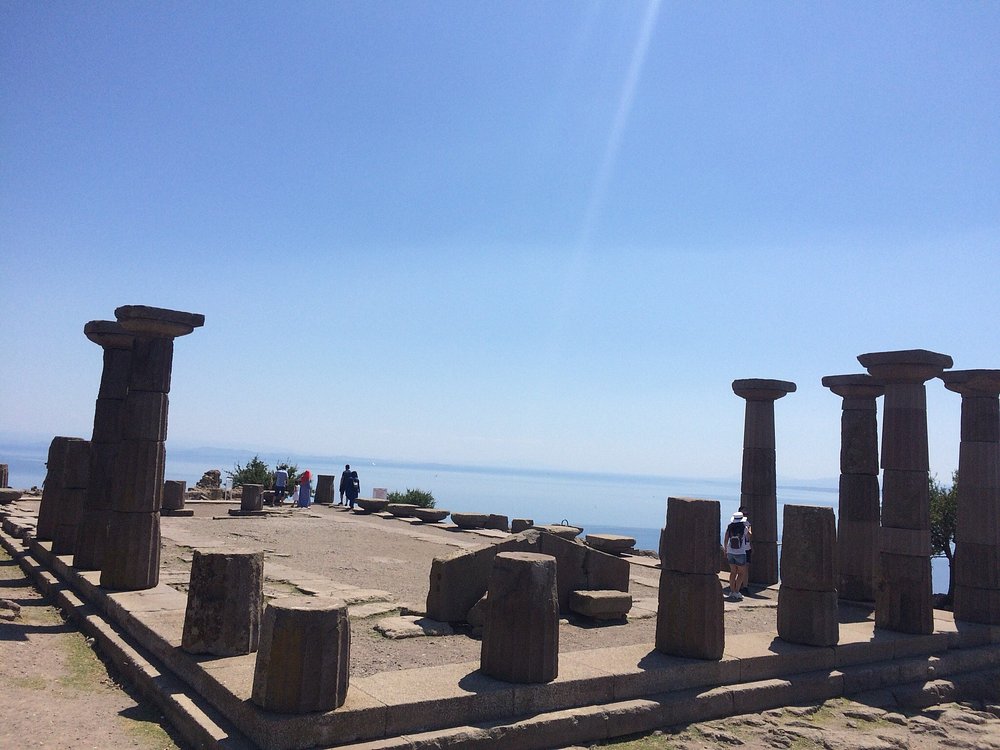
Some important artifacts excavated from the Temple of Athena in Assos are currently exhibited in various museums:
- Istanbul Archaeological Museum: Some friezes and reliefs from the temple are on display here.
- Louvre Museum (France): Certain friezes from the Temple of Athena, especially those depicting mythological scenes, are housed in this museum.
- Museum of Fine Arts, Boston (USA): Some architectural pieces and reliefs from the temple are exhibited here.
These artifacts are valuable examples that reflect the architectural and artistic significance of the temple.
What is the current state of the temple?
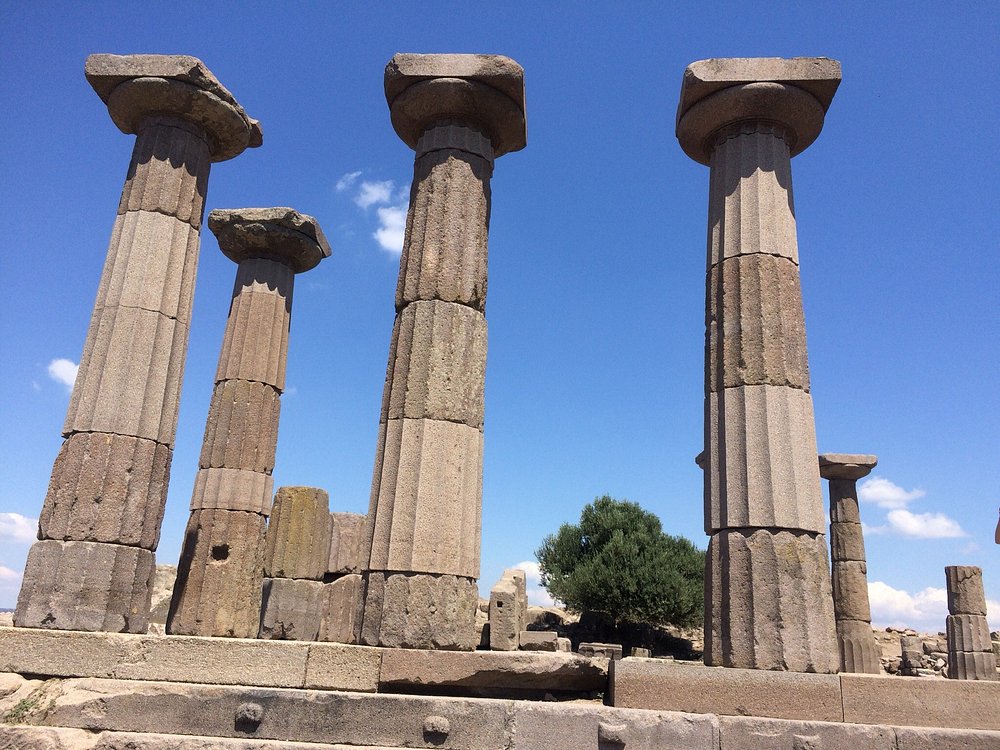
Today, the Temple of Athena remains one of the most striking structures in the ancient city of Assos. Built in the 6th century BC, it is the only example of a Doric temple constructed in Anatolia. The temple is located on the acropolis, approximately 235 meters above sea level, offering a breathtaking view of the Aegean Sea.
Although the roof and walls of the temple have collapsed over time, some of its columns still remain standing. It particularly captivates visitors with its view at sunset. As the temple is situated within the ancient city of Assos, it can be visited by paying the entrance fee to the site.
What is the historical significance of the Temple of Athena?
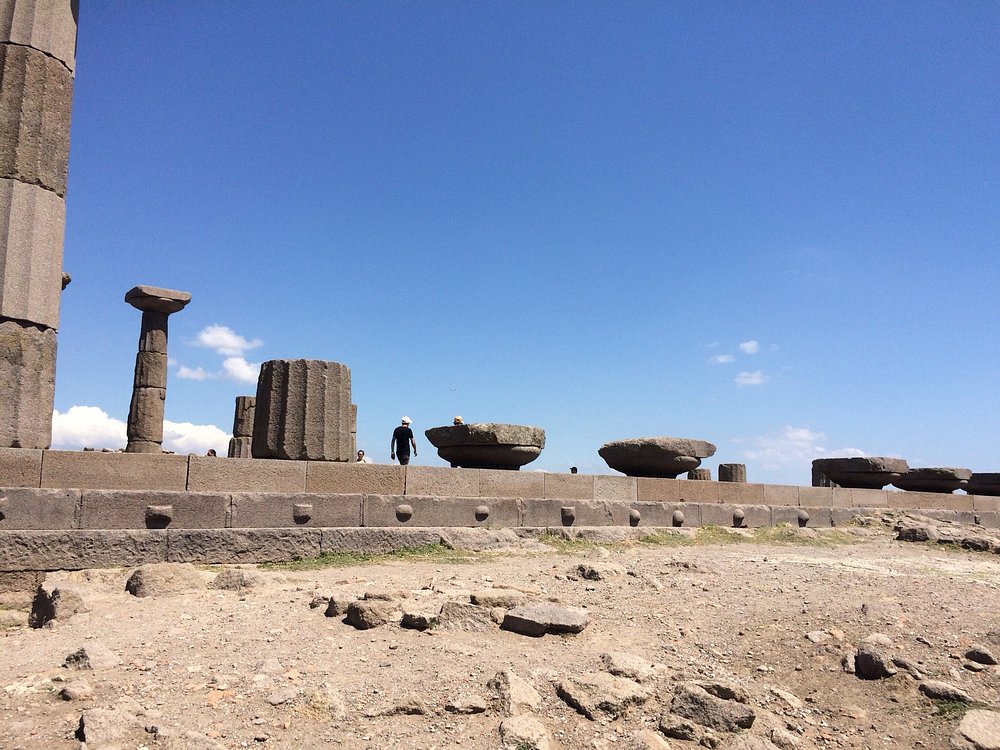
The Temple of Athena, the most sacred structure of the ancient city of Assos, was built in the 6th century BC in honor of Athena, the city’s protective goddess. The temple is significant not only as a religious structure but also as a symbol representing the political and cultural identity of Assos. As the only Doric-style temple built in Anatolia, it offers great architectural uniqueness and is among the rare examples reflecting the artistic understanding of the Archaic period. With these features, it has stood out both in antiquity and in the modern era as a remarkable monument.
The temple is also linked to the philosophical past of Assos. The renowned philosopher Aristotle came to Assos in the 4th century BC and established a school of philosophy here, making significant contributions to the intellectual life of the time. The Temple of Athena being at the center of this intellectual atmosphere shows that it was not only a religious structure but also a mental and cultural focal point. Today, with its historical and archaeological value, it contributes significantly to both academic research and tourism.
What are the visiting hours of the temple?
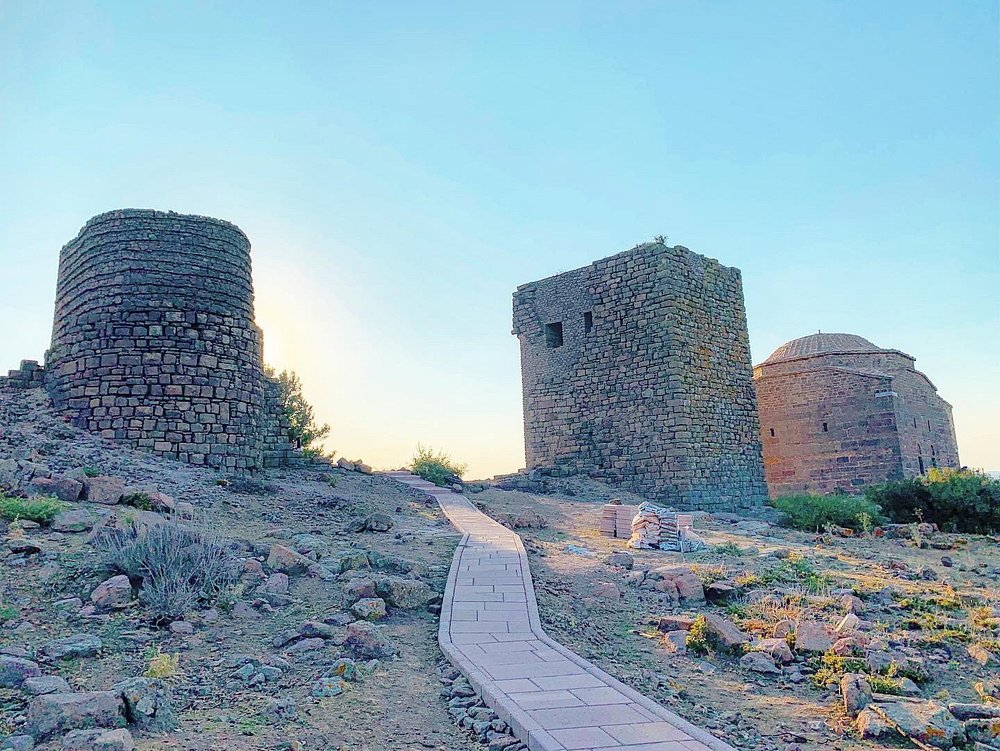
The Temple of Athena is located within the ancient city of Assos, and visiting hours vary by season:
- Summer Season (April 1 – October 1): 08:30 – 20:00
- Winter Season (October 1 – April 1): 08:30 – 17:30
- Ticket Booth Closing Times: 19:30 in summer, 17:00 in winter
- Visiting Days: Open every day of the week
Is there an entrance fee for the temple?
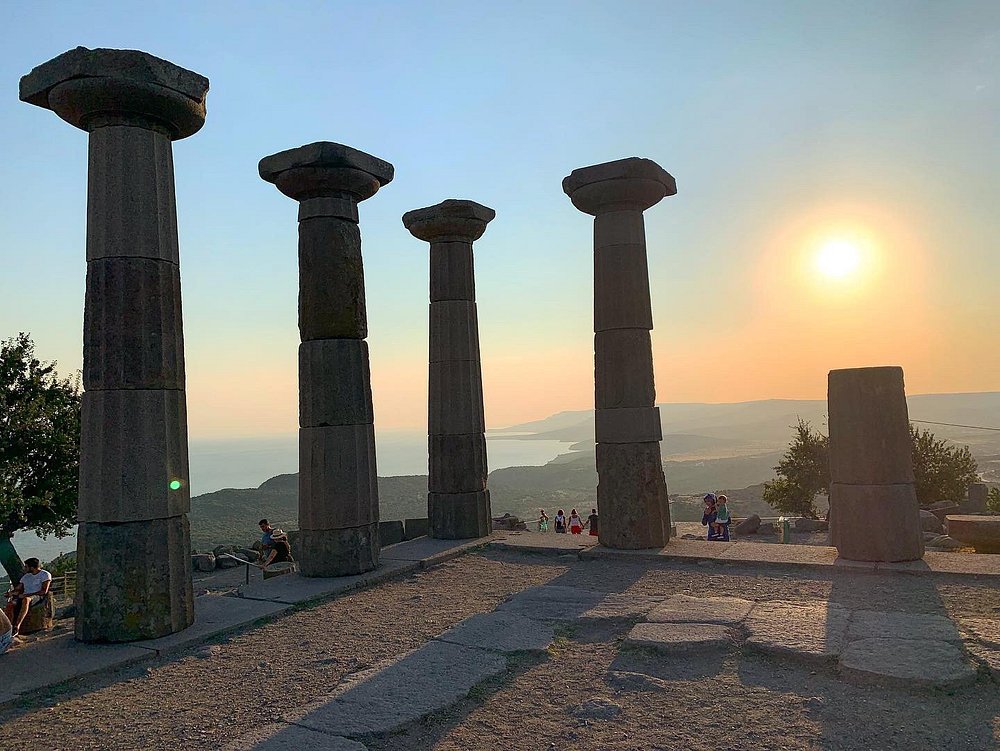
Yes, you need to pay an entrance fee to visit the Temple of Athena. Since the temple is located within the ancient city of Assos, it can be visited by paying the entrance fee to the site. As of 2024, the entrance fee for the ancient city of Assos is 18 TL. Additionally, Museum Pass holders can enter this site free of charge.
When planning your visit, please note that tickets must be purchased before the ticket booth closing time. During the summer months, the view from the temple at sunset is especially impressive.
What are the other important structures in the ancient city of Assos where the temple is located?
The ancient city of Assos is home to many important structures besides the Temple of Athena. One of the most striking among them is the Ancient Theater, which is positioned facing the sea. Renovated during the Roman period, this theater has a capacity of approximately 5,000 people and hosts various events today. In addition, the Agora (marketplace), located at the center of the city, was the heart of social and commercial life.
Furthermore, the necropolis (cemetery area) extends across a wide area starting from the eastern entrance of the city, where tomb structures from the ancient period can be seen. The city walls, which surround Assos and were built for defense purposes, are among the impressive remains. Other important archaeological remnants of the city include the gymnasium, bath structures, and Byzantine-era churches. These structures reveal the multi-layered historical and cultural richness of Assos.

